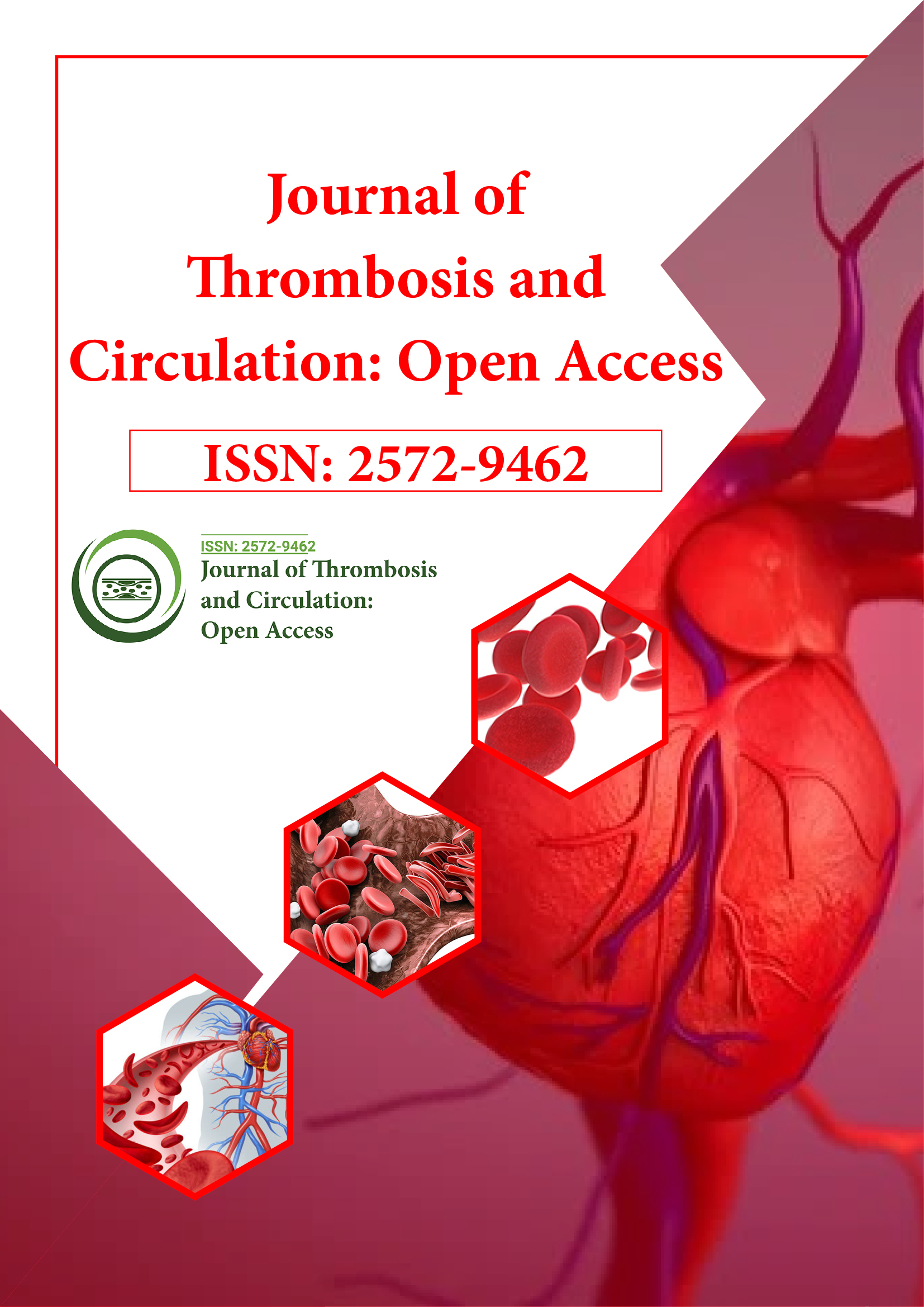Indexed In
- RefSeek
- Hamdard University
- EBSCO A-Z
- Publons
- Google Scholar
Useful Links
Share This Page
Journal Flyer

Open Access Journals
- Agri and Aquaculture
- Biochemistry
- Bioinformatics & Systems Biology
- Business & Management
- Chemistry
- Clinical Sciences
- Engineering
- Food & Nutrition
- General Science
- Genetics & Molecular Biology
- Immunology & Microbiology
- Medical Sciences
- Neuroscience & Psychology
- Nursing & Health Care
- Pharmaceutical Sciences
Commentary - (2022) Volume 8, Issue 3
Predictors and Clinical Impact of Thrombosis
Received: 02-Apr-2022, Manuscript No. JTCOA-22-17002; Editor assigned: 04-Apr-2022, Pre QC No. JTCOA-22-17002(PQ); Reviewed: 18-May-2022, QC No. JTCOA-22-17002; Revised: 25-May-2022, Manuscript No. JTCOA-22-17002(R); Published: 03-Jun-2022, DOI: 10.35248/2572-9462.22.8.186
Description
During pandemic, people with severe cases of coronavirus disease may develop aberrant blood clots ranging from pulmonary embolisms in the lungs to deep vein thrombosis in the legs, as well as clots that cause strokes or heart attacks. When a blood artery is damaged, proteins are produced that attract platelets and other clotting factors, this cluster together to create a clot, sealing the wound and allowing it to heal. The most serious concern about COVID-19 infection is the high risk of death. Despite the fact that death rates from this virus have been relatively low in India compared to other countries, considerable numbers of people continue to die due to the enormous number of individuals affected. Based on the information available so far, it is evident that respiratory failure is the leading cause of death in almost all patients. What is the root of the problem? Rather than bronchitis alone, as in most past influenza epidemics, it is early and progressive pulmonary thrombosis (clotting of blood in the lungs) which restricts blood supply, gas exchange, and breathing difficulties to collapse. Several degrees of evidence support this mechanism.
First, it was noted in early studies that a large proportion of COVID-19 infection patients arriving to hospitals had higher levels of d-dimer, a general marker of blood vessel thrombosis. Those with high d-dimer levels were more likely to develop serious respiratory problems and die. There are no additional sites of thrombosis in most of these patients, such as the leg veins, which are considerably more prevalent but have only been recorded in a few patients late in their illness after being in the hospital for several days. Secondly, multiple autopsy investigations from various nations provide the strongest evidence for this widespread micro vascular thrombosis. All of them had substantial blood clots in the tiny veins of the lungs (Micro Vascular Thrombosis-MVT), only with minor indications of pneumonia, implying that the blood clots are the cause of poor oxygenation and respiratory failure.
Thirdly, it is now known that the endothelial cells that line the blood vessels of the lung share the receptors on the cells in the air pockets of the lung that allow the COVID-19 virus to enter those cells. Post mortem examinations have revealed that these cells are infected, causing platelet aggregation in the tiny blood arteries. Although not treated correctly once, this will quickly worsen, leading to treatment-unresponsive respiratory failure. Fourth is the occurrence of silent pneumonia' or silent hypoxia,' which is increasingly being recognized even in the general community, in which relatively healthy-looking patients have low blood oxygen and later fall, most likely due to pulmonary thrombosis that has spread. Other types of lung injury may result in mortality in a few patients, but blood clots in the lungs are the major cause of death in almost all patients.
Early detection and intervention with blood thinners that are anticoagulants in this condition, at suitable doses, is therefore crucial. Based on a few simple assessments, this can be simply adopted in all hospitals: Even when they appear to be in good health, they have a higher rate of breathing at rest (above 20/ moment) and a lower level of oxygen in the finger (pulseoximeter, which is easily checked in hospitals upon 93 %. D-dimer levels should be examined as soon as practicable when possible. It was discovered to be elevated (more than 2-3 times above normal), which indicates a developing lung disease. Patients with these symptoms should start taking standard blood thinners such heparin or Low Molecular Weight Heparin (LMWH) in therapeutic doses very away. Preventive dosages of LMWH have been recommended promptly after diagnosis for patients with a higher risk of problems. In some cases, these medications are contraindicated. As a result, careful medical supervision is required. It is also necessary to keep a close eye on any negative consequences.
As a result, it's critical that the general public, as well as healthcare professionals, are aware of the problem of blood clots in the lungs, which is unique to COVID-19 in terms of severity. Of course, further research is needed to establish the appropriate doses at the optimum phases of the disease. While such considerations are necessary, they will never encompass all infected individuals who must all take blood thinners as prescribed. This technique has been proven to be beneficial in reducing COVID-19 infection-related mortality in India, as well as preventing the spread of COVID-19 variations.
Citation: Mesquita B (2022) Predictors and Clinical Impact of Thrombosis. J Thrombo Cir. 8:186.
Copyright: © 2022 Mesquita B. This is an open-access article distributed under the terms of the Creative Commons Attribution License, which permits unrestricted use, distribution, and reproduction in any medium, provided the original author and source are credited.
